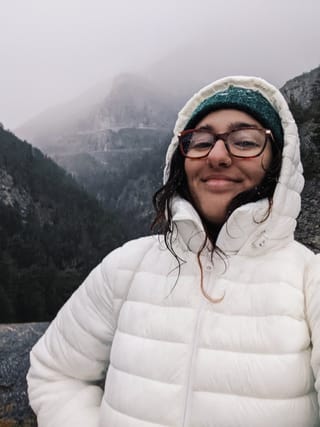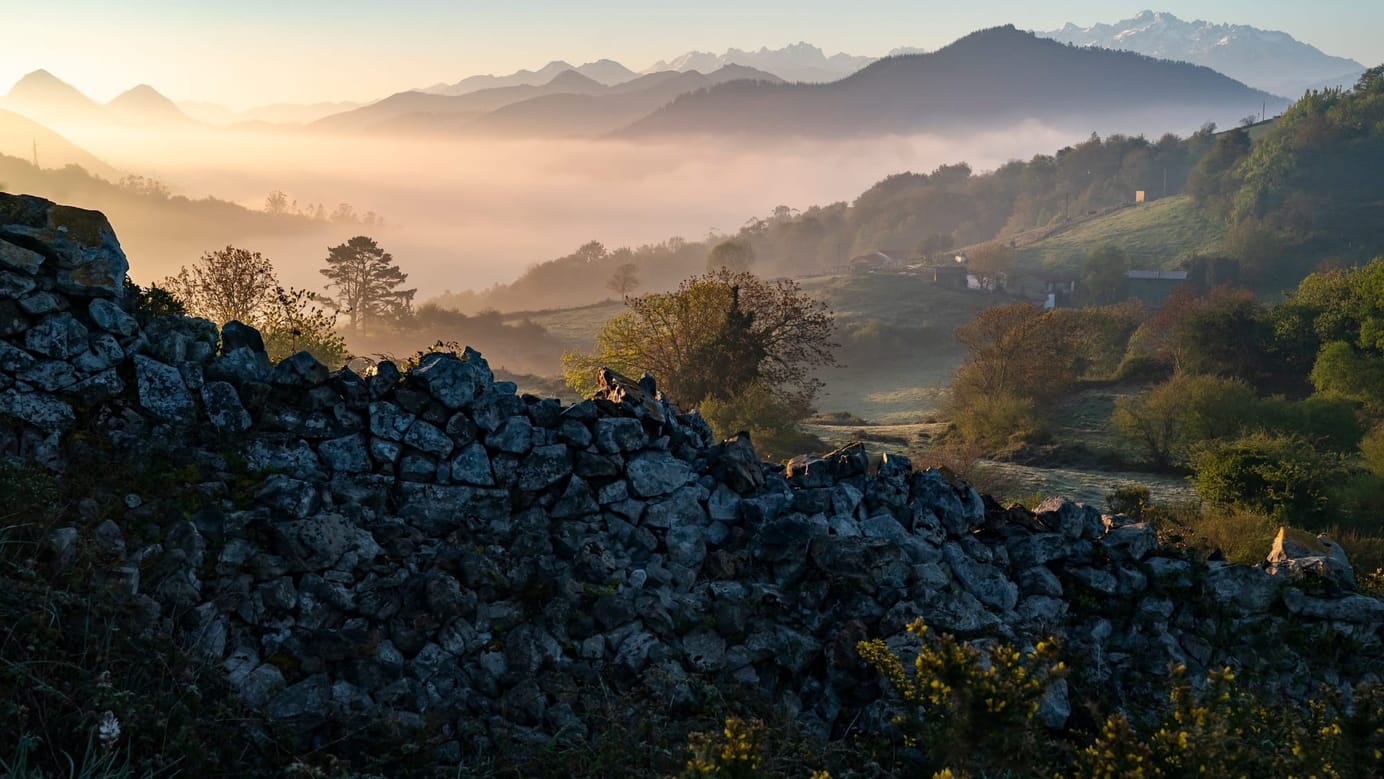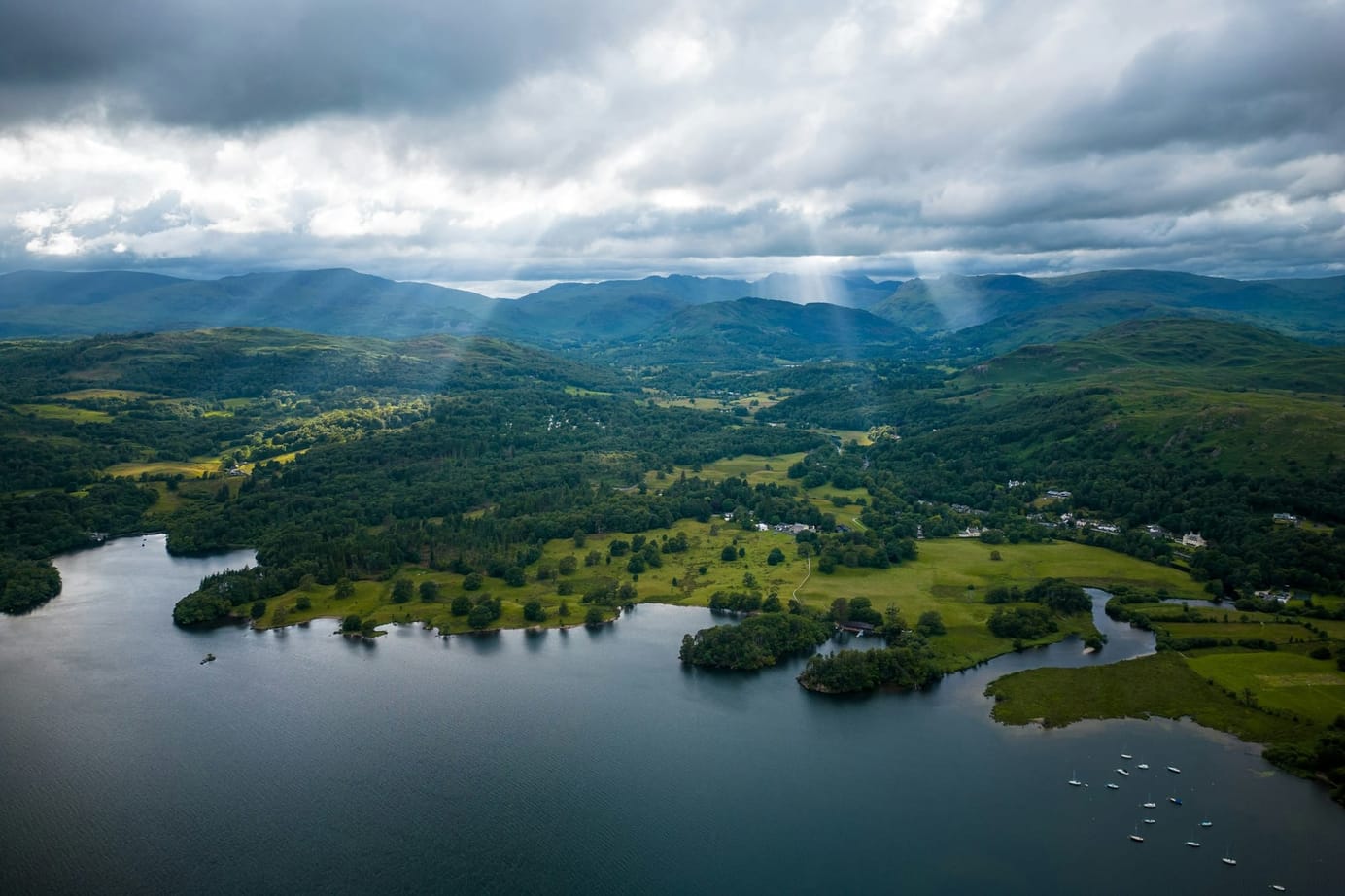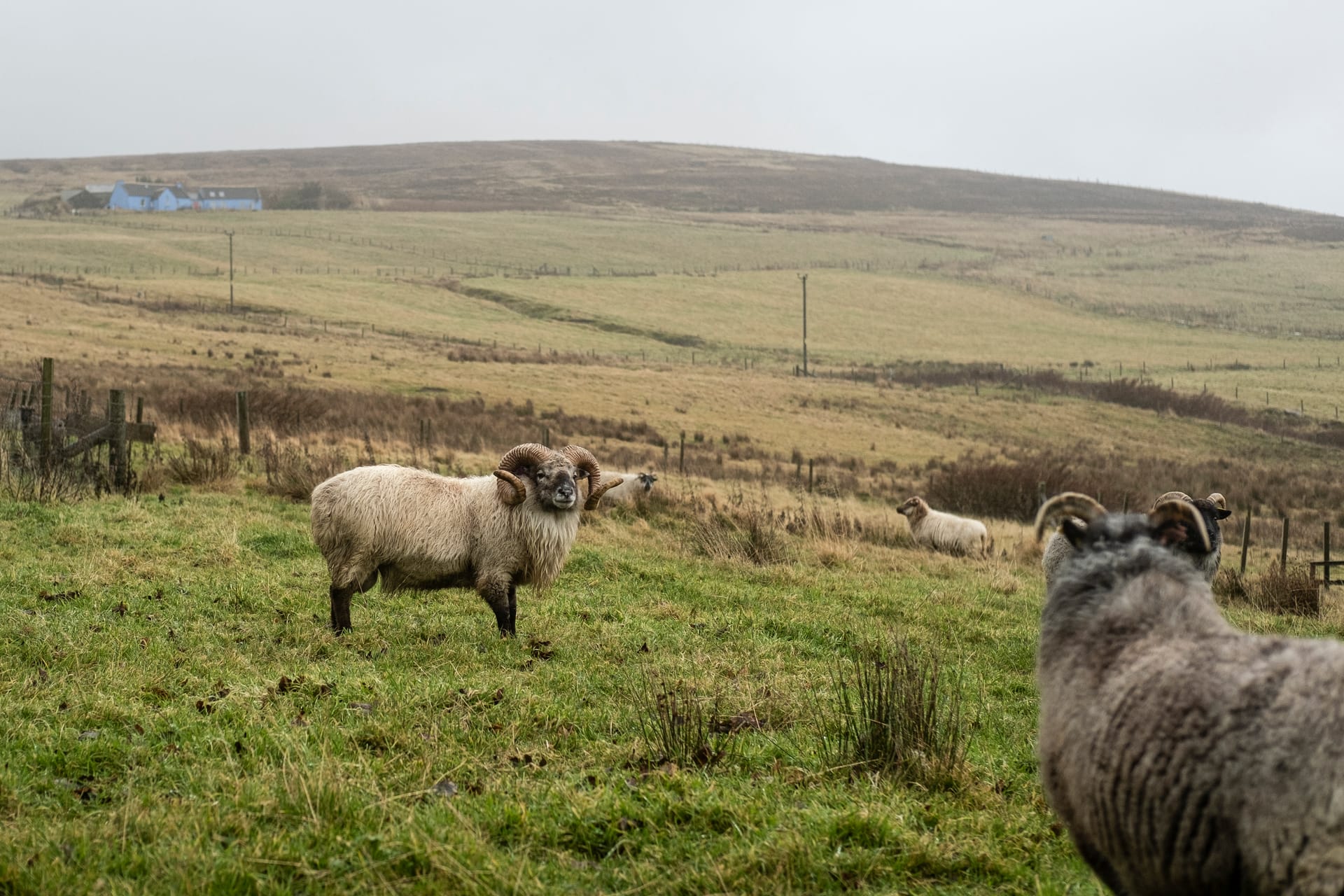
Meet the island community that saved an ancient sheep
In 1971, a boatful of feral sheep was transported from St Kilda to the Scottish mainland. Their descendants then vanished. This is the story of the Lost Flock – and the Orkney residents who saved their primitive genes.
We are running a discount on memberships until the end of July. Click the link below to join us. Members receive our weekly digests of conservation news, and provide essential support for our journalism.
It’s a mid-November morning at Burnside Farm on Mainland, Orkney. Jane Cooper pulls on her wellies, coat and heavy-duty gloves and steps out into an onslaught of rain.
From the fields, you can just make out the crescent-shaped outline of the Bay of Isbister. Beyond that is the sea, partially concealed by thick mist, which is creeping over the moorland. Here, scattered flocks of horned sheep graze upon the vegetation, defying the strong gusts of wind that sweep across the land.
Twenty years ago, if you had told Jane what her life would become, she would not have believed you. She is not Scottish; nor does farming run in her blood. Born in Coventry in the late 1950s, she moved to rural Warwickshire with her family when she was seven. Life subsequently kept her in the city: first as a medical student, then a haematologist, and ultimately as a wife, mother and chicken-keeper in the suburbs of Newcastle.
Although she had always loved nature, it was her passion for knitting that would lead her to Orkney. In 2010, she set up a forum on the knitting website Ravelry for people interested in using wool from different breeds of sheep. It was here that she would first hear of the rare breed – Boreray – that would soon become an obsession.
‘I want BORERAY YARN!’ a friend posted on the forum. Unfamiliar with the name, Jane did some research, only to discover that the sheep was listed as ‘critically endangered’ – the only breed in the UK with this status at the time. More to the point, no one was selling their yarn.
So Jane embarked upon an unlikely mission: to track down Boreray wool – and to find out why the breed was disappearing.
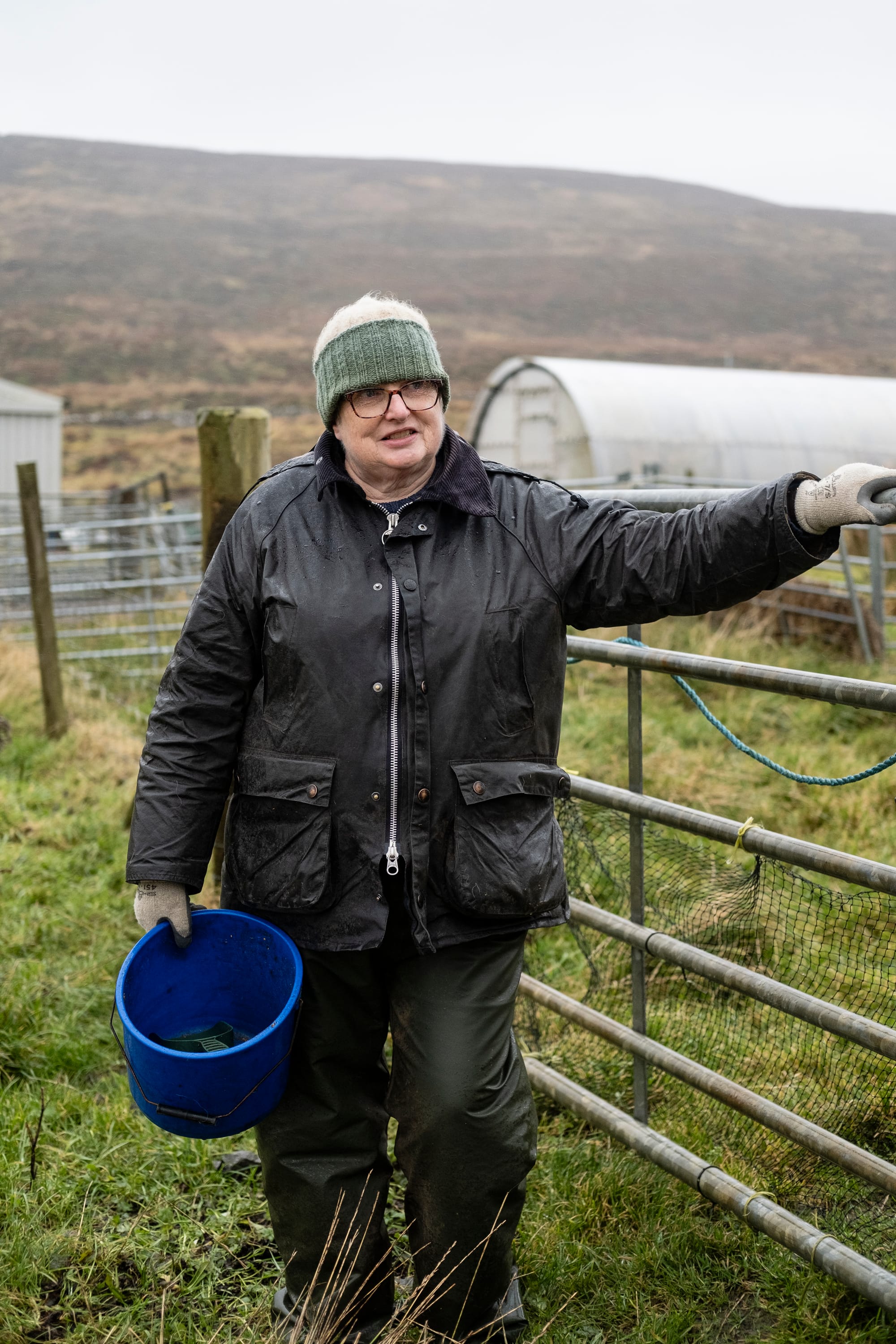
Boreray sheep are both ancient and modern. Their story starts in St Kilda, a remote archipelago of four islands – Soay, Hirta, Dùn and Boreray (after which the breed is named) – situated around 50 miles west of the Outer Hebrides.
Sheep have never been native to Britain. The animals were introduced by early farmers in the Neolithic period. Soay sheep are the most famous of St Kilda’s woolly residents: they still live on the island from which they take their name, where they have survived largely unchanged since the Bronze Age.
It was not Soay sheep, however, but another primitive breed, the Scottish Dunface, that ultimately made its way to the island of Boreray.
Exactly when Dunface arrived on Boreray is unclear, although there is written evidence of them having been there since the 17th century. They lived happily – and with minimal interruption from humans – for centuries, grazing among the burrowing puffins and weathering the storms and sea-spray that soak St Kilda year round.
Dunface sheep were once central to the economy of the Highlands and Islands, providing crofters with the meat and wool they needed to survive. With the Clearances, however, ‘improved’ breeds were brought in from England, replacing the older varieties that were so well suited to the terrain. Among these imports was the Scottish Blackface, which is the most common sheep in the UK today.
The arrival of Blackface helped to drive the primitive Dunface to extinction. In Boreray, however, their extermination was never quite complete. When Blackface reached St Kilda in the 1870s, they did not replace the Dunface, as they had elsewhere. Rather, they bred with them, causing their genes to mix.
The crossbreed that resulted from this union adopted the name of the island: the Boreray sheep was born. Today, their descendants are the nearest living ancestors of the primitive Dunface, retaining their genes and characteristics to this day. Unlike modern breeds, for instance, Boreray sheep shed their fleeces naturally in spring, meaning that they don’t need shearing. They can also give birth without assistance.
Such self-sufficiency is useful, given that Boreray sheep have survived as a feral flock for almost a century. In August, 1930, the remaining human population of St Kilda was evacuated, the conditions of the modern world having made their isolated existence increasingly untenable. The sheep of Boreray, however, were left behind. Here they lived undisturbed, until 1971, when a small number were removed and brought over to the mainland during a scientific expedition to the island.
It was time for this semi-ancient breed to start anew.
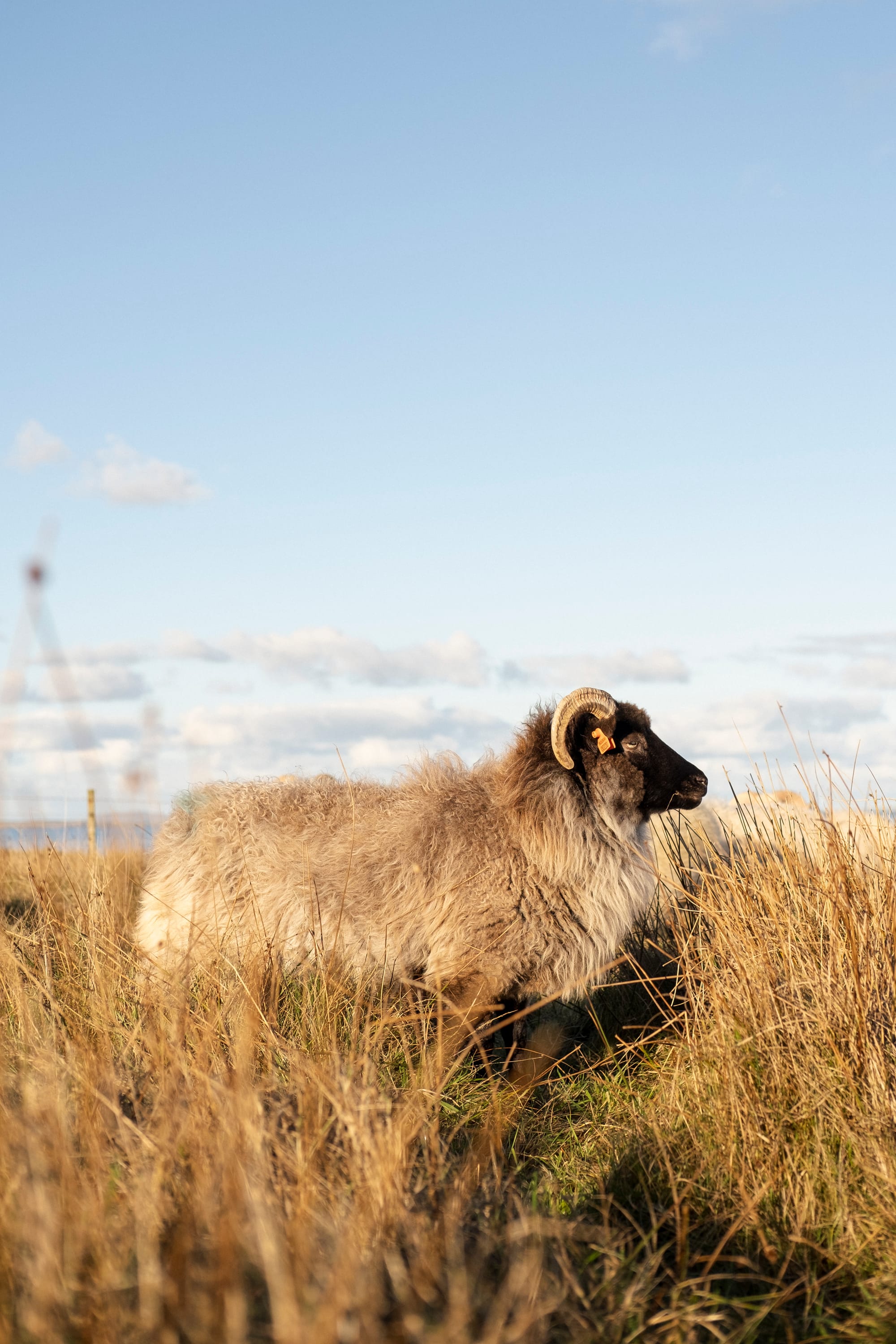
The British aristocracy keeps track of its members via Debrett’s Peerage & Baronetage – a regularly updated register of the nation’s titled classes. Sheep have their own version of this: the Combined Flock Book.
The Combined Flock Book tracks the genealogy of rare breeds – including Boreray and Soay, but also Manx Loaghtan and Norfolk Horn, for instance – with births, deaths and transfers of ownership all recorded within its pages. This enables breeders to track the pedigree of their flocks, and to ensure that the genes are passed onto the next generation.
Most of the sheep that made it off Boreray were listed within the Combined Flock Book – but not all of them.
After leaving St Kilda, the sheep bred and dispersed across Scotland. One group ended up with a woman called Martha Crawford, who lived in Inverness. Before a sheep can be registered, it needs to be inspected. But the cost of assessing her remote flock was prohibitively high. Their existence was never recorded.
The descendants of Martha’s sheep became known as the Lost Flock: genetically identical but bureaucratically different to other Boreray sheep. Over time, however, an informal register for the Lost Flock developed. When Crawford emigrated to Argentina, her sheep were sold on to other breeders, including a couple called Bob and Ann Cook, who kept meticulous records of their progeny.
Years later, when Jane embarked upon her quest for Boreray wool, Bob and Ann were among those to contribute fleece. It was to this couple that Jane would turn, once again, when she moved to Orkney in 2013, after her husband got a job at the island hospital.
Having bought a house with some 25 acres of land, she realised that she could now keep a small number of sheep herself, and asked Bob and Ann to sell her some lambs. Two years later, when Ann died, Bob sold her the last of his breeding sheep.
Suddenly, the future of the Lost Flock was in Jane’s hands. If she was going to succeed in saving them, she would need some help.
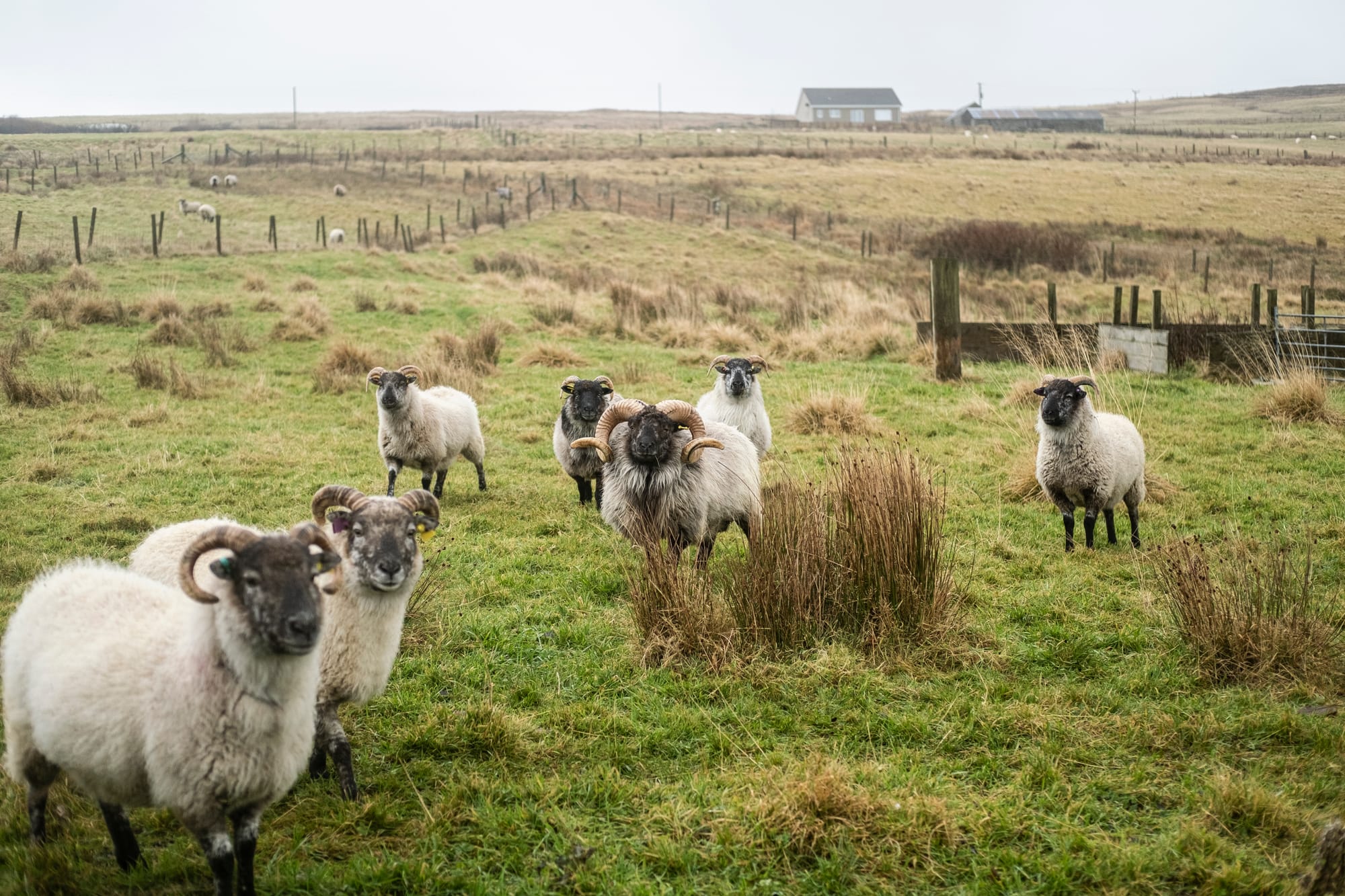
Keeping the entirety of the Lost Flock in one place would be risky. To give the rare sheep the best chance of success, Jane established a dedicated breeding programme and began to develop a market for their products.
Soon after, the Orkney Boreray community was born: a collective of farmers and craftspeople dedicated to the future of the rare sheep. The group is bound by a shared ethos and basic principles. These include raising the sheep using agroecological farming methods, according to the highest welfare standards.
‘I just wanted us all to trust each other and get along and be flexible,’ says Jane. ‘We talked about what we’d call ourselves and felt “community” best expressed what we were – a community without legislation.’
One of the first to get involved was Jenny Hall, a shepherdess and yarn producer based on the isle of Shapinsay. After living among a more pastoral culture in West Africa, she had struggled to settle after returning to the UK.
Initially, she rented a 6-acre field near her home in Derbyshire and began keeping a few sheep, including Balwen Welsh Mountain sheep. But when her husband got a job as an island nurse, more than a decade ago, the family relocated to Orkney and bought an 18-acre croft called Lochend.
Perched on the edge of Lairo Water, her home is an island within an island, encircled by an expanse of land, sea and sky. Keeping heritage breeds was integral to Jenny’s vision for a sustainable smallholding. She adopted her first Borerays from Jane in 2017, and now keeps around 35, which graze alongside her other sheep and goats.
Like many here, she juggles multiple responsibilities; my visit to her farm is squeezed between her shifts as a relief driver for the community electric vehicle. With just an hour left until the island is engulfed in darkness, we make our way outside to see the sheep. It’s only 2.30PM, but the sun has already begun its slow descent and casts long shadows across the land. The Borerays keep a watchful eye on us from afar, their spiralled horns poised in the air.
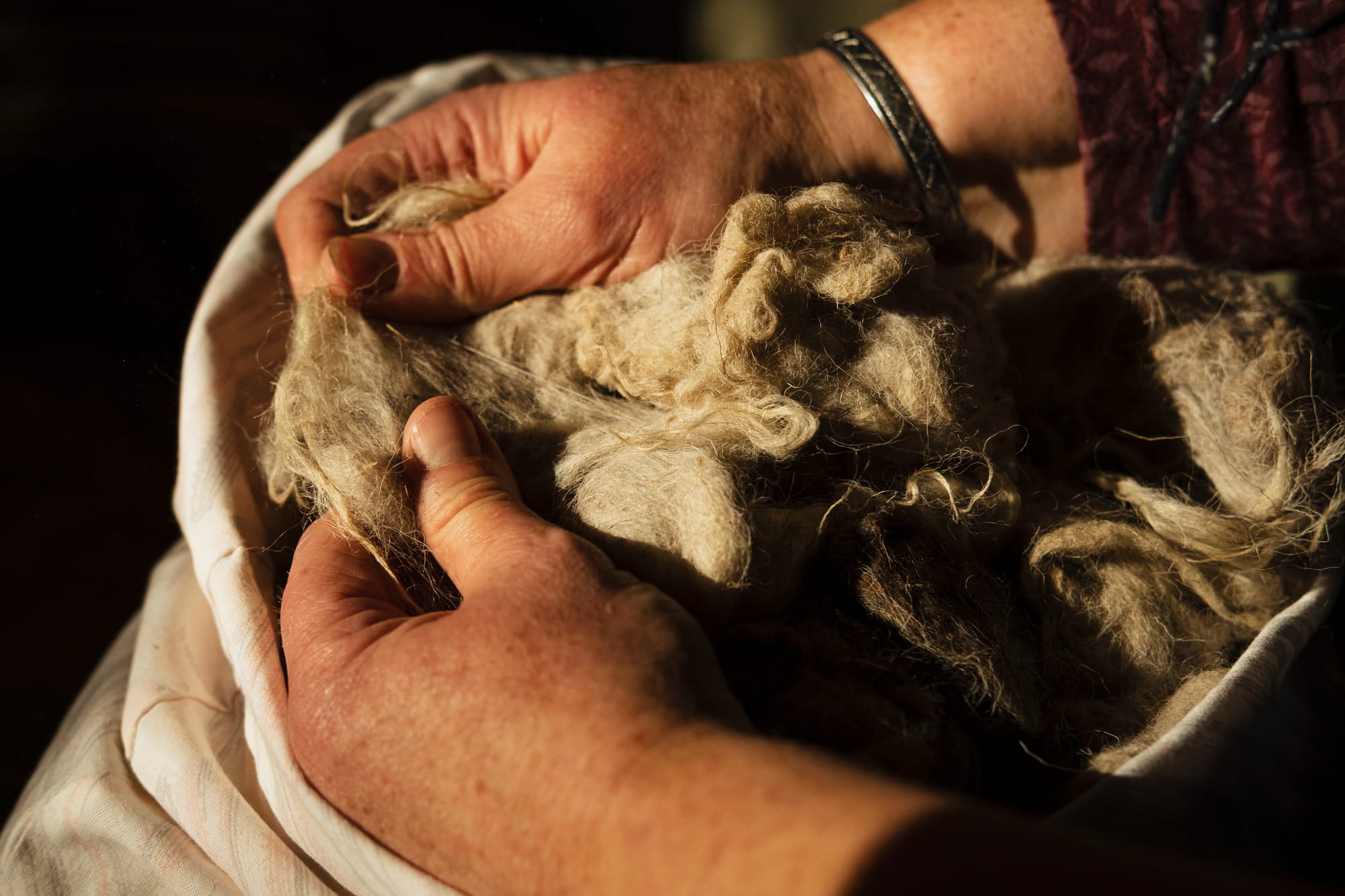
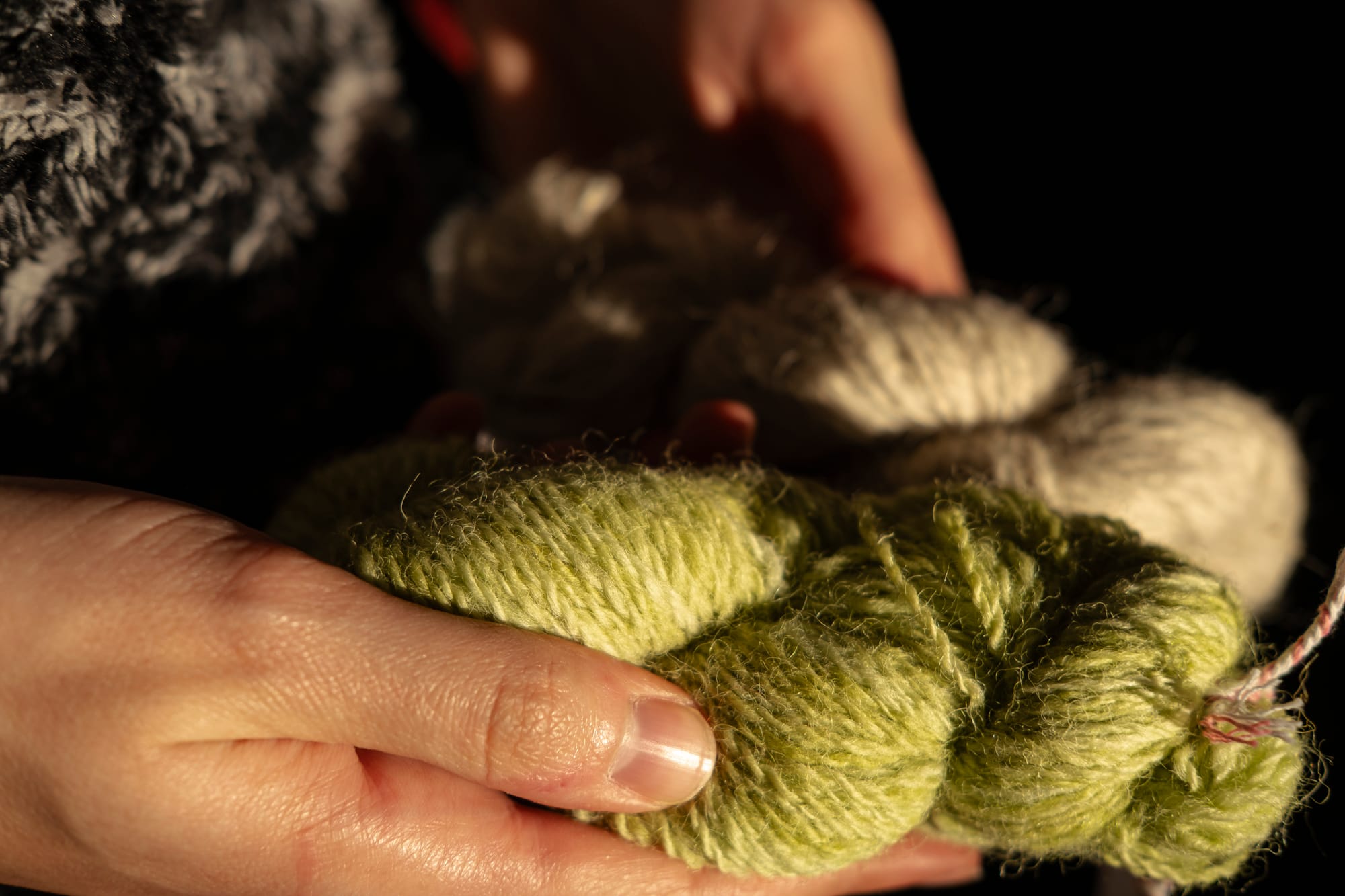
It is both a lifestyle and a business. She sends the fleeces for processing to a wool mill in North Ronaldsay, Orkney’s northernmost isle. The resulting yarn is either sold or used to make her own products.
Back inside the house, she starts sorting through the latest batch. She points out the huge variety of colours, ranging from creams to dark browns, despite being from just a few fleeces.
A few sheep also end up in the abattoir each year. When that happens, they try to use as much of the animal as possible, which includes selling the horns and bones to fellow Orkney Boreray producer Nathan Taggart – a blacksmith and craftsman – who uses them to carve one-of-a-kind objects such as pendants, knife handles and drinking horns. They do this, says Jenny, ‘not just for financial gain, but as a principle of not wasting anything and honouring the animal in death, as we did in life.’
Since getting the flock, Jenny has seen a positive effect on local avian life, with increasing numbers of ground-nesting birds in their paddocks each year. She explains that their smallholding is managed as permanent pasture; by avoiding ploughing and reseeding, they can encourage a rich mix of floral species, too.
‘We believe in good stewardship as the birds and native flora will be here, hopefully, long after any memory of us being at Lochend has passed,’ says Jenny. ‘We might own the property, but we have a responsibility to steward the animals and land as best we can.’
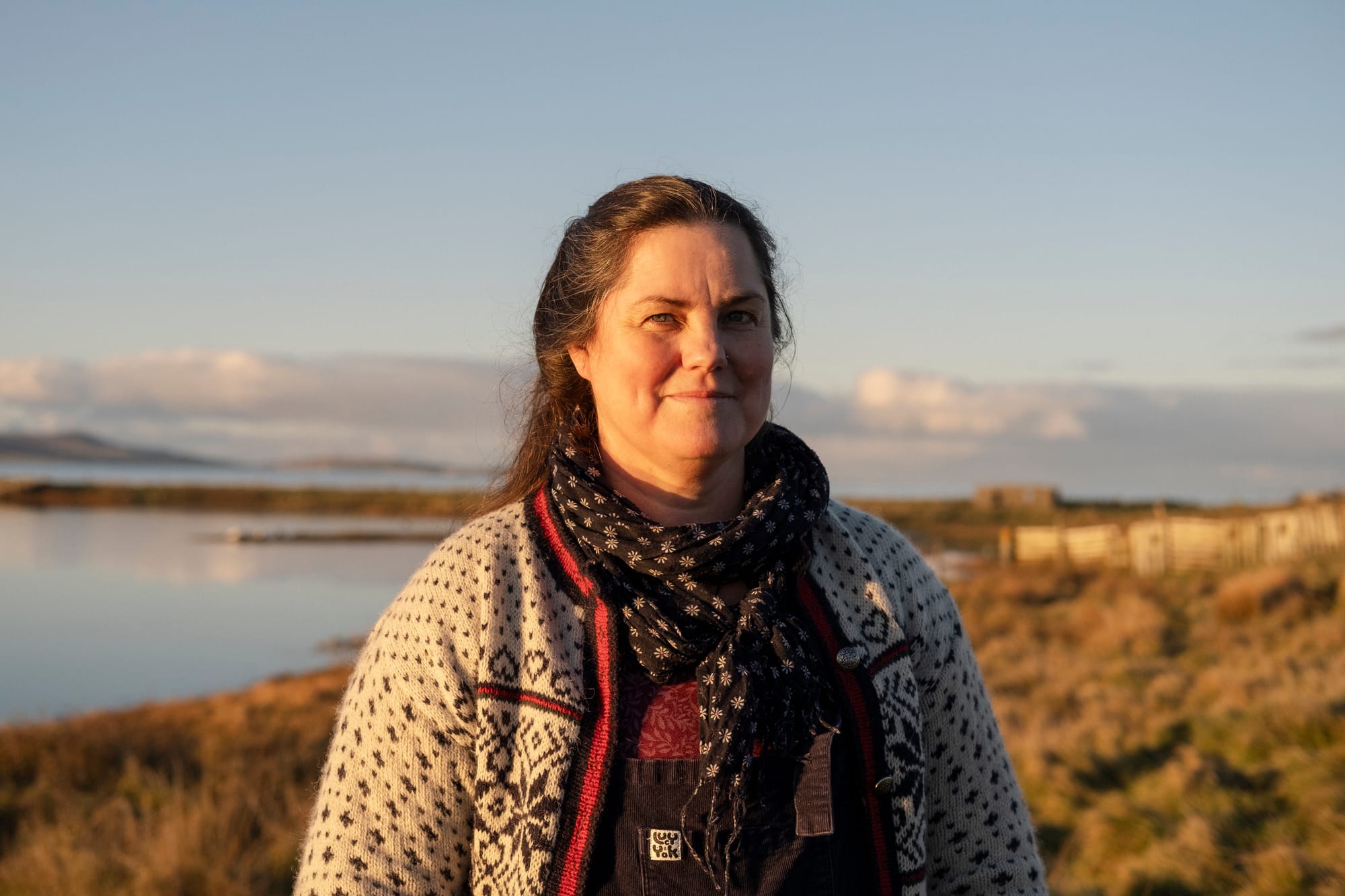
Jenny’s observations raise the question of the impact of the sheep on the local environment. There might be cultural and genetic reasons for preserving rare breeds of sheep – but is there an ecological one?
Sheep and nature have never been easy bedfellows. Conservationists have long debated the role of this introduced species – even the primitive breeds – within the ecosystem. Following a seven-man expedition to Boreray in 1971, the zoologist John Morton Boyd weighed up the pros and cons of allowing the feral sheep to stay on St Kilda.
‘It must be recognised… that the presence of sheep on the islands of St Kilda is a human artefact and that a case could be made for their removal and of the development within the islands of ecosystems free from such interference,’ he wrote in a subsequent paper, published in Biological Conservation.
‘The presence of the sheep may have a limiting effect on the great concourses of burrow-nesting seabirds; on the other hand the sheep grazing probably provides for a greater diversity of plant and animal species than might be the case if the sheep were withdrawn,’ he concluded. In other words, the answer – then as now – was nuanced.
On Orkney today, the RSPB acknowledges the positive role that sheep can play in maintaining natural habitats, so long as conditions and stocking levels are right.
‘Sheep grazing, managed properly, can provide huge benefits for wildlife in Orkney,’ Joshua Wells, senior sites manager at the RSPB’s Orkney branch, tells me. But achieving the right balance is critical. When it comes to birds, he says, ‘you want those poor puny wader chicks to be able to easily get about, but you also want enough cover for them to hide away. Without this, birds such as lapwing and curlew can really struggle to raise a brood, and this is a huge part of what is affecting these species: a lack of suitable habitat.’
Farmers Kate Stevens and Richard Rae – members of the Orkney Boreray community based in Birsay, Mainland – are advocates of conservation grazing. It is nearly dusk when I reach their house the following day, and they have a fire going. Outside it is cold and misty, the wind sending ripples over the loch at the end of their land.
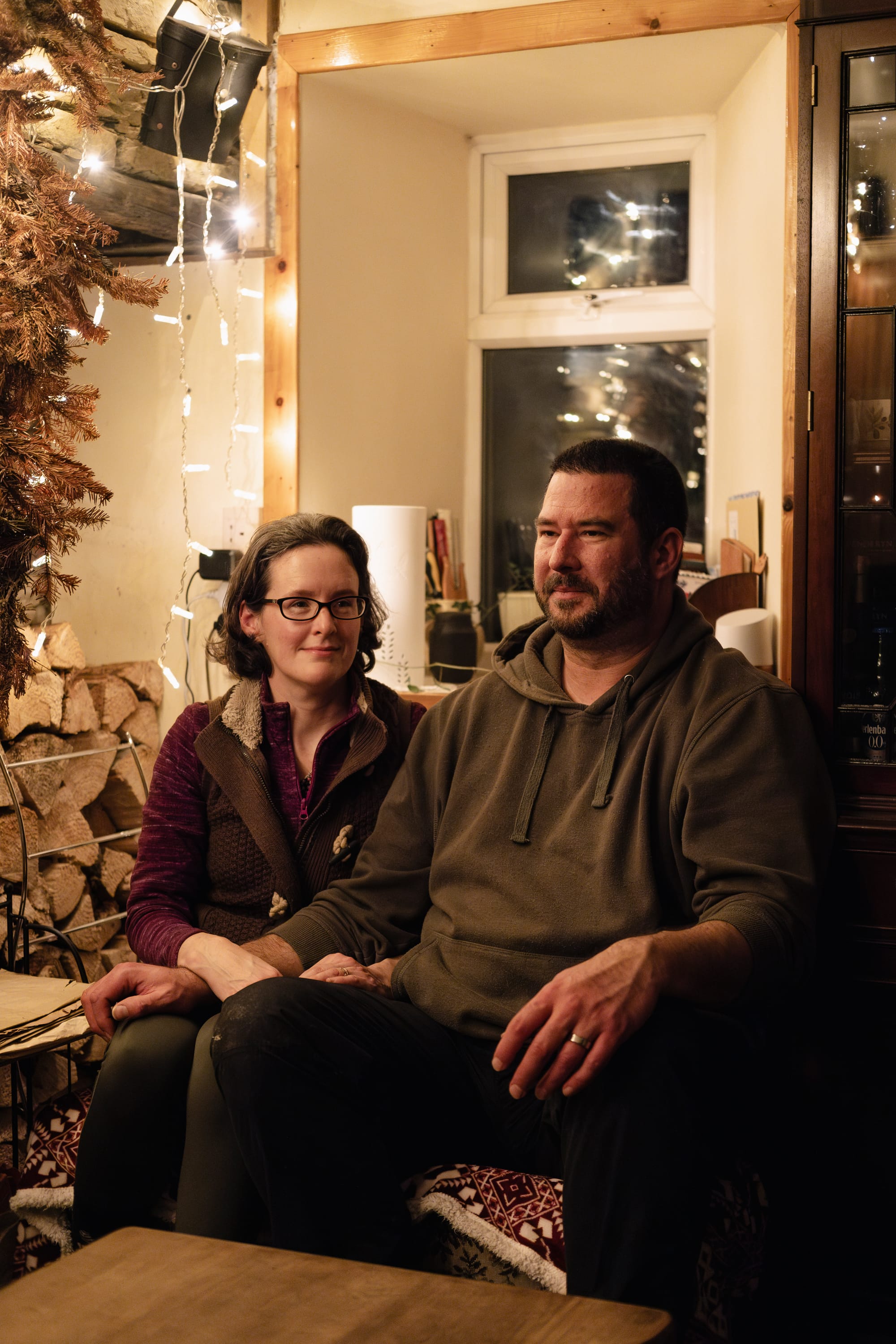
When the pair moved here in 2019, they were struck by the poor diversity of the pasture. ‘The grass was constantly growing year on year and dying out, which we refer to as thatching,’ Kate tells me. ‘It grows up really tall, gets to the end of the season, dies, and collapses on itself and just stays there, partially rotting.’ As a result, fewer species can grow through and biodiversity plummets.
The pair’s priority was to restore the land. To do this, they wanted sheep. They sought a British – preferably Scottish – native breed, hardy enough to cope with the Orkney climate. In 2022, they purchased a starter flock of six Borerays from Jane.
Kate and Richard practise rotational grazing. This means putting the sheep and other livestock with different grazing habits and plant preferences on the land for short periods of time, and then shifting them to a different area to allow the land to recover. ‘That’s how we reclaim the land,’ says Kate. ‘All of a sudden, all these little plants that never get a chance can grow.’
To avoid overgrazing, timing is critical. ‘It’s that analogy of working 24/7,’ says Richard. ‘If you work 24/7, you would physically damage yourself. If you work for 12 hours, then rest 12, you’re in a much better position. Same principles for the land, but over longer periods.’
The frequency of rotation depends on how quickly the vegetation grows back. Sometimes it takes weeks, sometimes months. ‘Basically, we’ll go out there every day, and while we check the animals, we also check the field,’ says Richard.
‘We’re still learning,’ adds Kate. ‘Every year has been different.’
Sheep don’t only graze on the pasture; they also poo on it. Kate and Richard avoid using any chemicals on their land. Instead, they rely on manure. This allows both above- and below-soil invertebrates to thrive. ‘Dung beetles are very sensitive to any chemicals or changes in the environment and they’re one of the first to go,’ says Richard. ‘The fact that they’re here on our land indicates how good it is.’
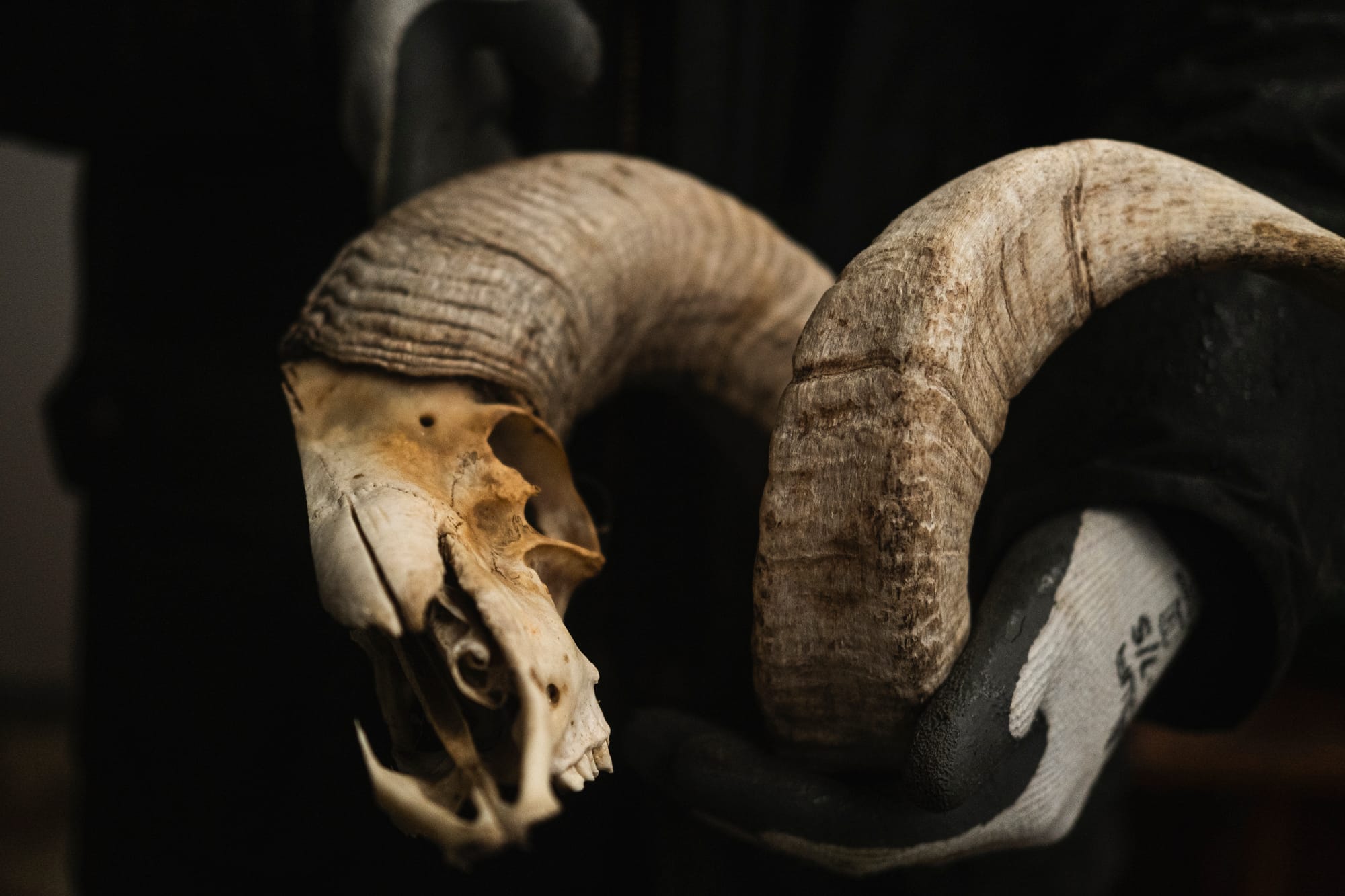
It’s my final morning in Orkney, and I am meeting textile artist India Whitwell at a weaving studio in Kirkwall, the largest town on Orkney. Originally from Kent in England, India came here in 2018 on a graduate weaving placement, intending to leave once it ended. Five years on, she now lives on Mainland, where she teaches weaving and runs her own textile business called Orkney Cloth.
When she first arrived, India discovered that Orkney’s two textile mills – Sclater’s and Argarden – had produced cloth to rival Harris Tweed in the 1930s. But both closed when industrial production took over in the mid-1970s. As a consequence, weaving completely died out.
‘I suppose, in the consumer’s mind, whenever they think of weaving in Scotland, they think tartan, Harris or Shetland, but they don’t tend to think of Orkney,’ says India, as we walk between rows of handlooms. ‘So I think it’s important for us to revive that history.’
India crowdfunded her own loom and produces all of her products in-house. When she heard of Orkney Boreray sheep through Jane, who was one of the crowdfunder’s supporters, she was delighted, as she had been searching for locally-sourced wool. The fleece is sent to the North Ronaldsay mill and then returned to India as yarn, from which she weaves limited runs of artisan scarves and blankets.
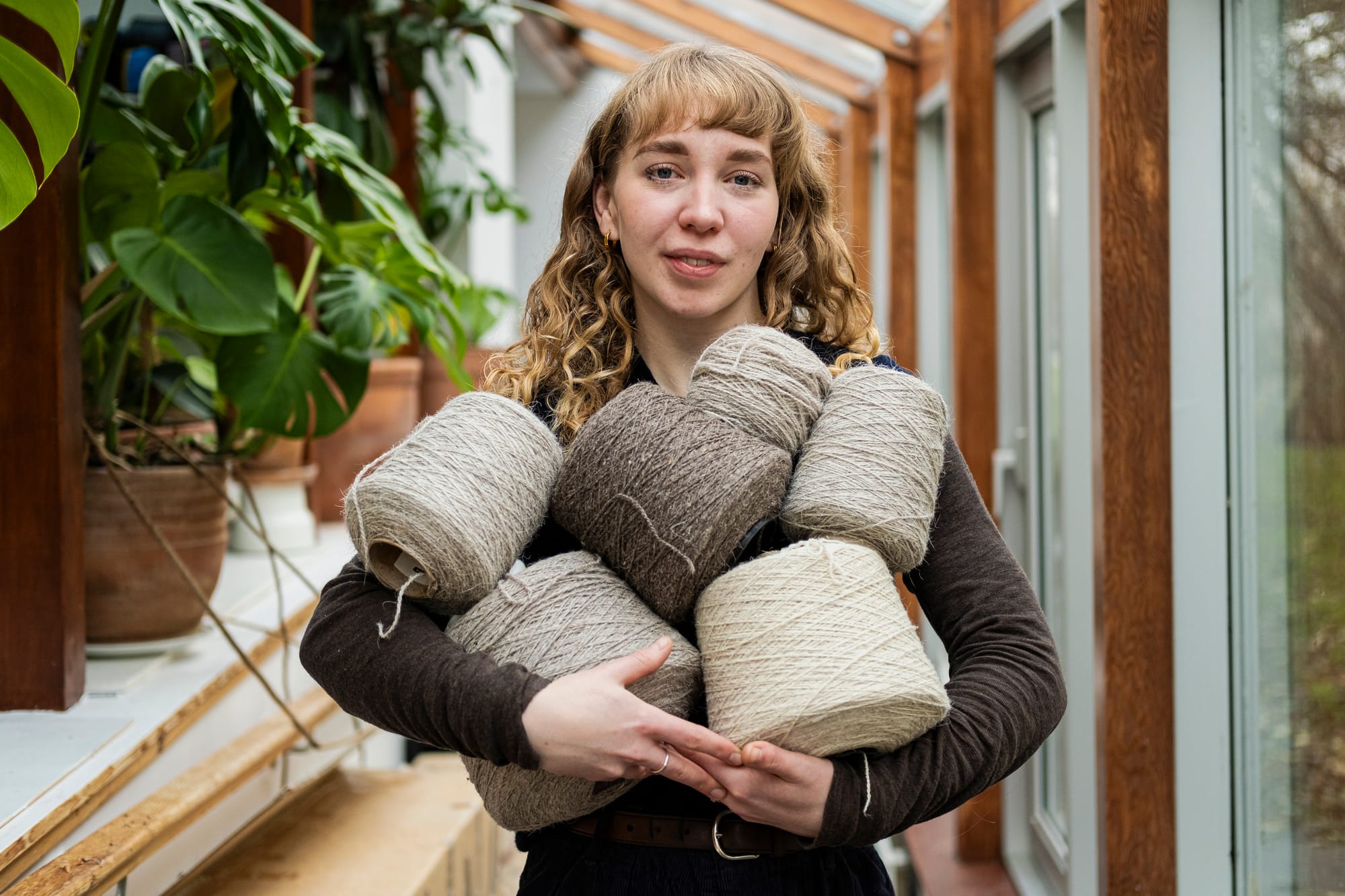
‘The draw for me is the fact that we’re not having to send the wool far each time. It’s keeping everything circular and within a 50-mile radius,’ explains India. When ordering yarn from outside Orkney, ‘it’s not the same as being able to say, “I know the farmers, I know how well the sheep are looked after,” because there’s no real way to know,’ she continues. ‘Whereas with this, we can absolutely guarantee that. And it makes a big difference, I think, to the end product.’
Finding uses for wool could benefit farmers, too. Fleeces often sell for less than the cost of shearing, meaning that they usually end up going to waste. Instead, consumers rely upon synthetic fibres, produced by an industry where people, animals and the environment are often exploited, and where the end products soon end up in landfill. The model that India is advocating offers a more sustainable – if expensive – alternative.
She shows me her latest collection, which is produced using exclusively Orkney Boreray wool. These are luxury products – £390 for a grey-brown blanket – with the price reflecting the time and care that has gone into each one.
‘It’s so different from your normal wool. When it’s all washed and finished, it’s almost like cashmere,’ she says, handing me a scarf. ‘In future, I would really like to be able to say it’s all Orkney wool, but it’s going to take time to shift that over. I think it’s possible though.’
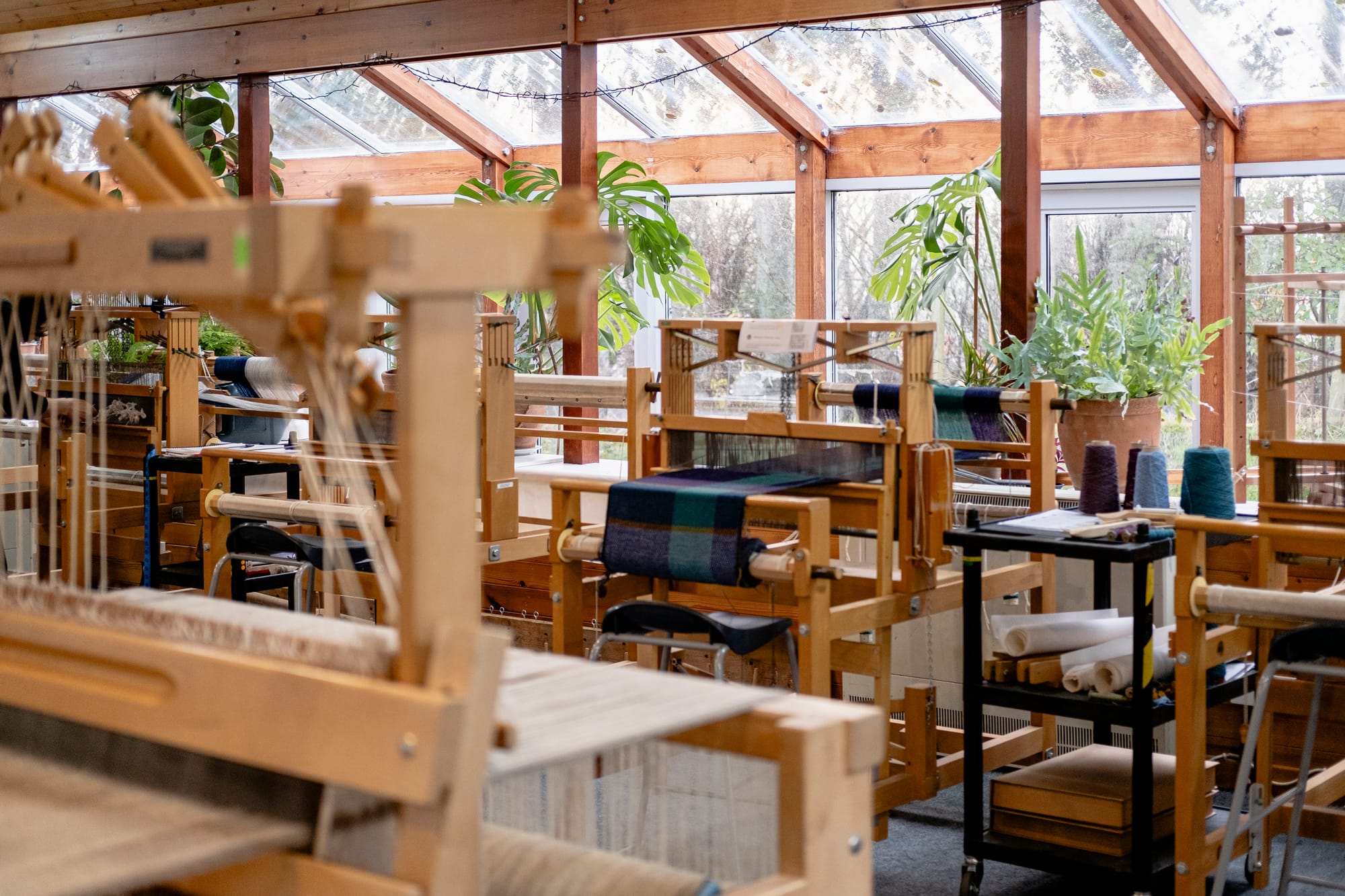
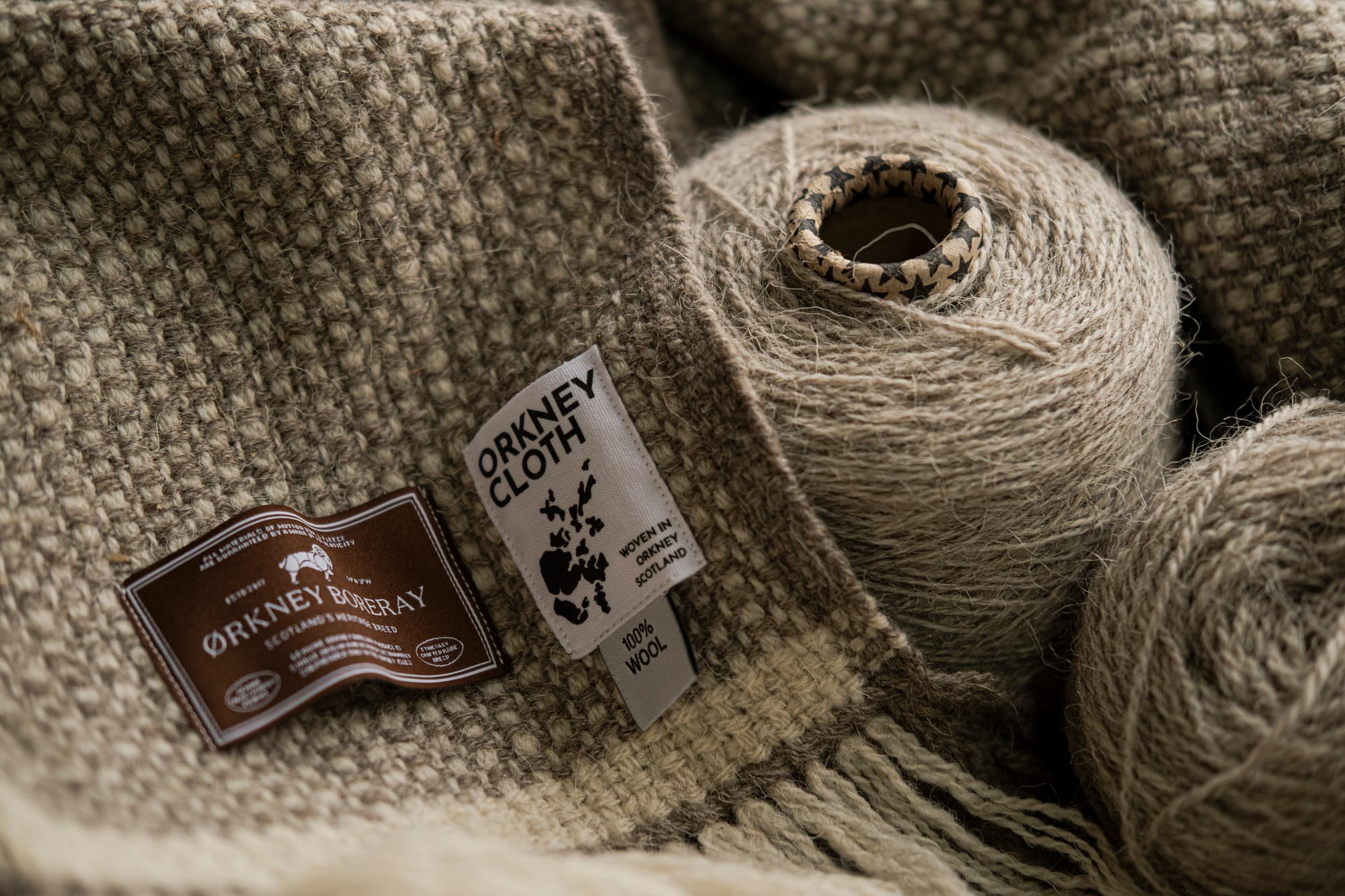
Back at Burnside, Jane shows me a Word document that she calls the sheep list – her personal register of the breed she helped to save. It contains every single Boreray in Orkney, including its registration number, tag number, who bred it, its parents and its custodian. It is constantly updated, so that every birth and death is recorded.
It is her life’s work – and something that she hopes will continue when her own life is done. As the eldest in the community, Jane says her ultimate aim is to make herself redundant. This will ensure that the Orkney Boreray initiative continues beyond her: that the last genes of an ancient heritage are preserved well into the future.
‘I’ve seen it happen once or twice. Someone who’s had quite an important flock becomes ill or dies, and then the flocks disperse,’ she says. ‘I couldn’t have this happen. We have to keep the Lost Flock going.’
Words by Eva Clifford. Photographs by Ameena Rojee.
Audio read by Lianne Walker.
The Lost Flock, by Jane Cooper, is published by Chelsea Green.
This feature was made possible by funding from The Pebble Trust.
Subscribe to our newsletter
Members receive our premium weekly digest of nature news from across Britain.
Comments
Sign in or become a Inkcap Journal member to join the conversation.
Just enter your email below to get a log in link.


